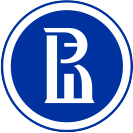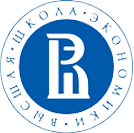1. CCC Index
The Capacity to Combat Corruption Index for Latin American countries developed by the not-for-profit organisations Americas Society and the Council of the Americas (AS/COA) in cooperation with the international consulting company Control Risks and published for the first time in 2019 is a study focused on the effectiveness of anti-corruption reforms and anti-corruption capacities in 15 countries of the region (except for the first year when the ranking covered only nine countries).
The last study shows that most Latin American countries, just as in the previous years, have not made considerable progress: only 40 per cent of them got over five out of ten possible points with the average score for all countries amounting to 4.85.
It is Uruguay (7.42 point out of ten), Costa Rica (7.11) and Chile (6.88) who achieved the best results and are traditionally placed at the top of the ranking. The bottom performers of the 2022 ranking, as a year before, are Venezuela (1.63), Bolivia (2.57) and Guatemala (3.38). The researches stress that Venezuela (+0.23) and Bolivia (+0.14) improved their performance if compared to the last year, whereas Guatemala (-0.46) regressed more than any other country covered by the study.
The negative dynamics, observed since the first CCC Index edition in such countries as Brazil (0.31), Mexico (0.2) and Argentina (0.12), persist. Conversely, the Dominican Republic considerably improved its performance moving up from the 10th place in 2021 to the 5th this year.
The researchers highlight that anti-corruption efforts of Latin American countries are in general disparate: while a number of jurisdictions demonstrate constant progress in this area, other States, including two major countries of the region, i.e. Mexico and Brazil, lose ground because of a decrease in the effectiveness of performance of key anti-corruption institutions and of the functioning of the anti-corruption system as a whole. The authors of the Index believe that other potential causes of poorer performance are the shift of attention to the fight against COVID-19 pandemic and its consequences, as well as the rapidly growing inflation.
In addition to the scores, general description of the current situation in the anti-corruption area with the main challenges and key future trends is provided for the jurisdictions covered by the study.
Significant steps in countering corruption, taken by the countries over the last year, include the launch of the Register of Integrity and Transparency for Companies and Entities (Registro de Integridad y Transparencia para Empresas y Entidades) in Argentina, which allowed the country to considerably improve its performance in the Civil Society, Media and Private Sector category, enhanced international cooperation in Paraguay that conducted TURF (together with Brazil and Europol) and A Ultranza PY (in cooperation with Uruguay, Europol and the US Drug Enforcement Administration) operations aimed, in particular, at holding perpetrators liable for money laundering, and adoption of laws reinforcing the corporate liability framework in Colombia, and adoption of the National Integrity and Corruption Prevention Strategy 2021 to 2030 by Costa Rica, which makes the researchers optimistic about progress in the fight against corruption in these countries in the near future.
As for the challenges, the study mentions the growing number of episodes of harassment of anti-corruption activists and organisations, as well as of law enforcement officers involved in investigations against high-ranking officials in Guatemala.
As regards future anti-corruption trends, the study refers to the proceedings against large-scale schemes of bribery of public officials underway in such countries as Costa Rica, Peru, the Dominican Republic, Ecuador (“Cementazo” Scandal, Cuellos Blancos del Puerto, Odebrecht, Operación Coral and others), as well as the initiation of verifications with regard to politicians, civil servants and other relevant persons after the publication of the Pandora Papers. These investigations can allow for holding liable corrupt officials, including high-ranking ones, in the future: Chile, for instance, has come to the proposal to impeach the President.
2. WHACI
Published for the first time this year, the Western Hemisphere Anticorruption Index developed by John Jay College of Criminal Justice, City University of New York, is an assessment of 31 countries of the Caribbean, Central and South America that is an aggregate of:
- Convention Implementation Score (CIS);
- Corruption Resilience Score (CRS).
The WHACI website contains:
- the final report;
- open data which served as a basis for assessments;
- interactive maps allowing to consult the measurement results for each country; additionally, assessments can be filtered by the area of anti-corruption measures, their specific elements, conventions and CRS indicators;
- aggregate rankings where countries are ranked based on the total score and the score under specific components; it is also possible to filter the results by region;
- information about each country in the form of a profile that includes general data about the country (region, income level of the population, population size etc.), CIS and CRS scores, including with regard to specific elements, description of major changes and trends which impact the implementation of conventions and corruption risks in the country.
2.1. CIS
The assessment of countries under this indicator reflects the grade of their implementation of obligations under international and interregional conventions, including the United Nations Convention against Corruption, the Inter-American Convention against Corruption and the OECD Convention on Combating Bribery of Foreign Public Officials in International Business Transactions.
In order to conduct the assessment, the authors divided, somewhat conventionally, the measures whose implementation is provided for by the conventions mentioned above into blocks under three thematic dimensions:
- prevention of corruption and related offences (10 measures, such as Standards of Conduct, Training of Public Officials, Assets and Conflict of Interest Declarations etc.);
- criminalisation of corruption and related offences, and law enforcement (25 measures, for instance, Passive Public Bribery, Active Public Bribery, Liability of Legal Persons, Jurisdiction: Offence-in-Territory, Jurisdiction: Offense-by-National etc.);
- international cooperation (15 measures, for example, Prosecution without Extradition, Technical Cooperation, Limited Use of Information and others).
Having analysed the documents provided by countries under implementation review mechanisms of relevant conventions and the recommendations received in conclusion of the monitoring, the researchers assessed the capability of countries to implement the indicated measures in three dimensions:
- adoption: willingness to adopt and carry out the selected measure, as well as the number of existing initiatives which have been formally adopted by a State Party in pursuing its implementation. It is assessed through two indicators: the existence of initiatives that correspond to the selected measure (effort) and actions aimed at creating relevant anti-corruption instruments (creation);
- design: characteristics of the initiatives aimed at implementing anticorruption measures. It is assessed through three indicators: the scope to which the anticorruption initiatives are applicable (scope), the degree to which an anticorruption initiative is in line with the international standards established by the conventions (features), and the existence and inclusion of the required systems, sanctions, and oversight bodies in the initiatives (mechanisms);
- enforcement: the level of enforcement of initiatives. It is assessed through three indicators: the consistency of the enforcement of anti-corruption initiatives (intensity), the degree to which the anti-corruption initiatives are enforced impartially (integrity), and the degree of resource (budget, staff etc.) allocation (resources).
Based on the overall assessment of the findings contained in the review reports, a score (0 - “criticism, 0.5 - “in progress”, or 1 - “approval”) under the abovementioned indicators was given to each country. The score could be adjusted, taking account of the character and dimension of the problems mentioned in the reports that countries face. In the event that information on a certain indicator was not provided in the country report, it was automatically assigned the score of 0.5.
After that, a total score for each country was calculated. This is a weighted average which considers the value of each implementation dimension (for instance, the value of “design” and “enforcement” contribute more to the overall score than “adoption”). The total measure was calculated based on the following formula:
(Effort+(Creation*1.5))+((Scope+Features+Mechanisms)*((Intensity+Integrity+Resources)*1.5))
The maximum possible value of the weighted score amounted to 16.
Subsequently, the final score was rescaled into a 100-point system with each country being assigned one of the following statuses:
- implemented, if a country received from 71.9 to 100 points;
- in progress, for the total score ranging from 43.8 to 71.8;
- core-deficient, from 9.4 to 43.7; and
- not implemented, below 9.3.
The first place in the ranking was taken by Costa Rica with 76.28 points that has implemented, in a way or another, all the measures provided for by the conventions and is improving them in line with the recommendations put forward in the country reports. The researchers stress that the country is showing particularly good results in the area of international cooperation (85.57 points) and criminalisation (75.63).
The study places Argentina second with 75.23 points, before Colombia (74.22) and Peru (72.27). It is highlighted that only these four countries have the “implemented” status.
At the bottom of the CIS ranking, there are Saint Lucia (30.9), Suriname (31.7) and Dominica (38.44). These countries were assigned the “core-deficient” status.
The analysis concluded with general recommendations regarding the areas to which Latin American countries should pay particular attention. These include:
- prevention of corruption and related offences;
- transparency and accountability of state (local) bodies and officials;
- protection of whistleblowers;
- fight against corruption in the private sector.
2.2. CRS
The CRS assessment of countries reflects the existence of corruption risks and the areas, institutions and sectors particularly prone to these risks and implies analysis under five indicators:
- social context (political rights, civil liberties and media freedom);
- quality of government (the ability of the government to control corruption, the quality of public administration and bureaucracy, and the effectiveness of government institutions);
- business stability (regulatory environment, property rights and transparency in government policies);
- rule of law (independence of the judiciary, separation of powers, criminal and civil judicial process);
- violence and security (political and social terror, organized crime).
Each indicator is based on the publications of the World Bank, Transparency International, Economist Intelligence Unit, Freedom House, the World Justice Project and other entities for the period spanning 2010 to 2020, selected on the basis of the following criteria:
- face validity;
- unidimensionality and variance within acceptable values;
- bivariate and multivariate relationships of the data.
Considering the fact that the data were extracted from different sources, each indicator was subsequently normalized (through the Min-Max normalization approach) and transformed into the score ranging from 0 to 100, where 0 is the worst performance and 100 stands for the optimal indicators.
The variables for each country were aggregated using the arithmetic mean. Based on the final score, countries were labeled as follows:
- resilient (from 70 to 100 points);
- moderately resilient (45-69);
- vulnerable (below 45).
The CRS findings show that only two out of 31 countries (6 per cent) covered by the study, namely Uruguay (77.64) and Costa Rica (73.3), are resilient. 22.6 per cent of countries are vulnerable with Venezuela (15.19), Nicaragua (32.19), Haiti (35.12), Cuba (37.92), Guatemala (40.97), Honduras (42.05) and Bolivia (43.88) being the bottom performers.

